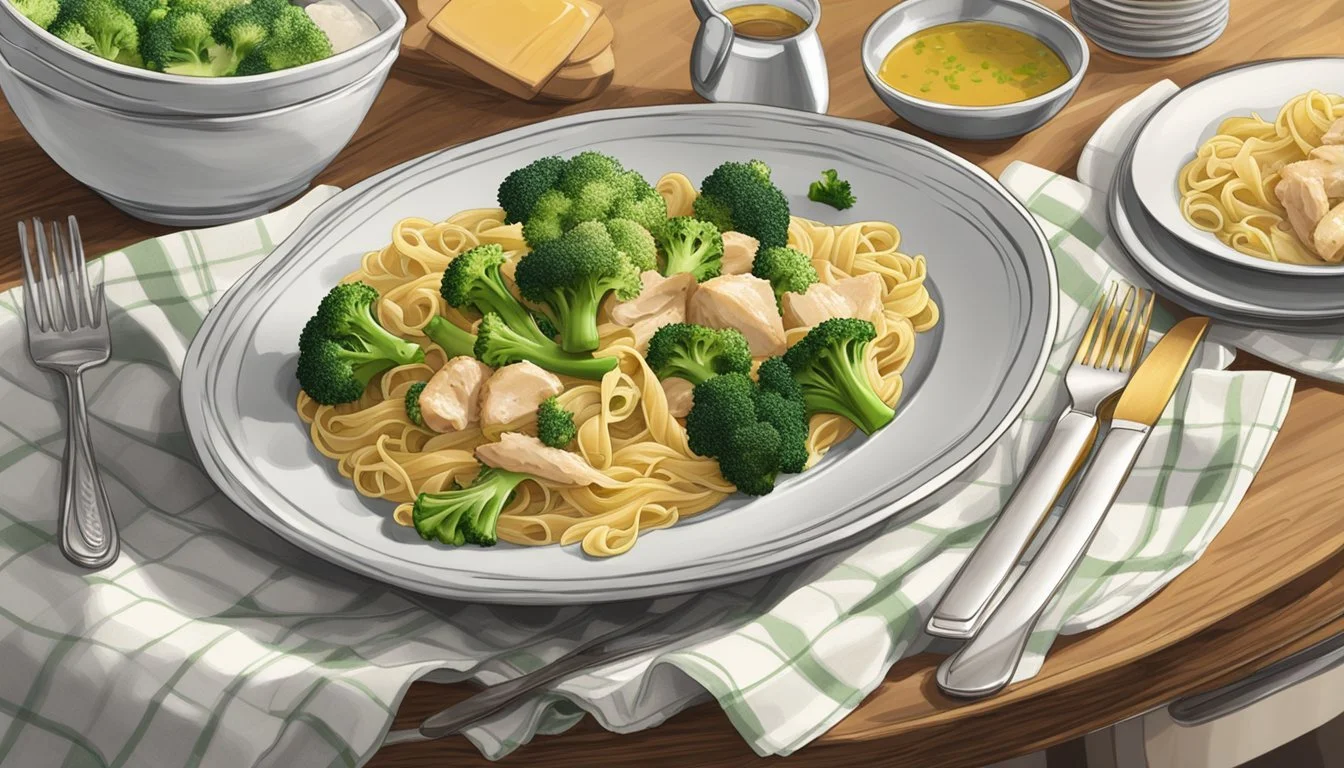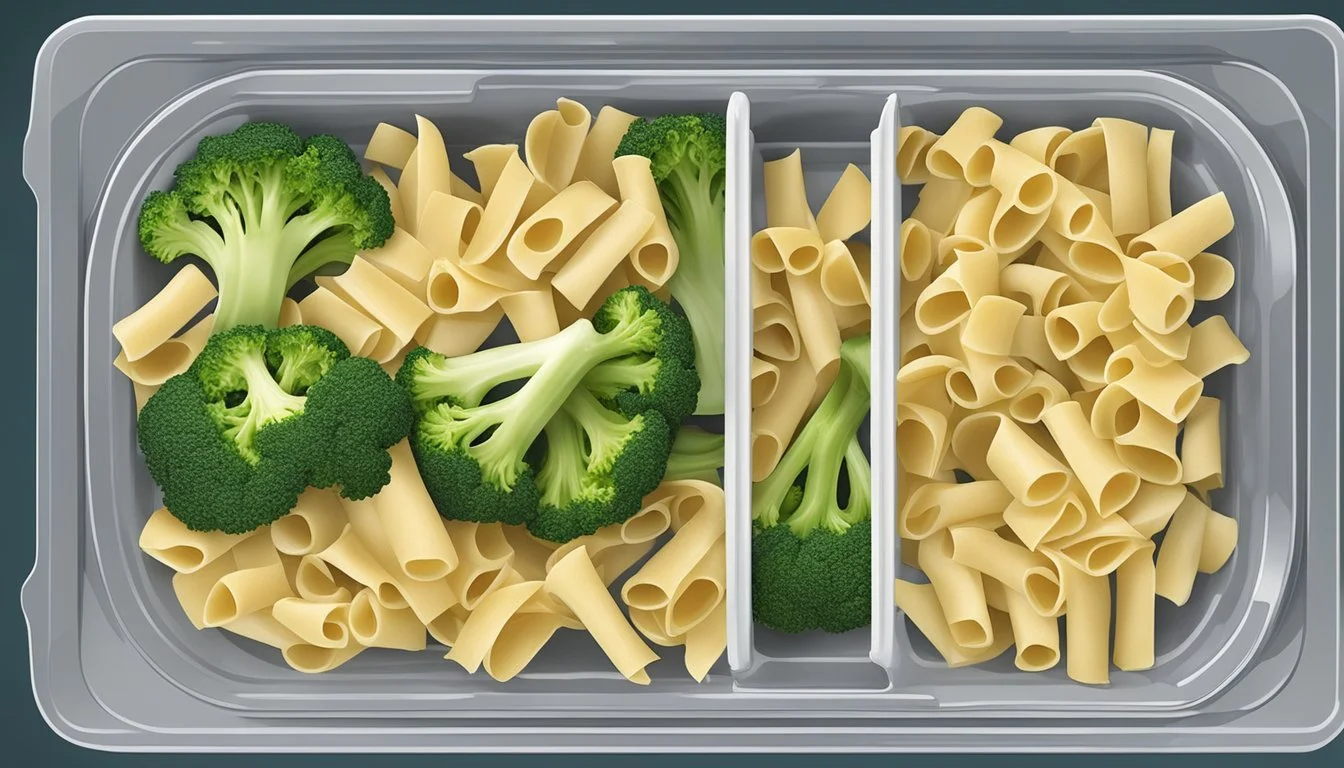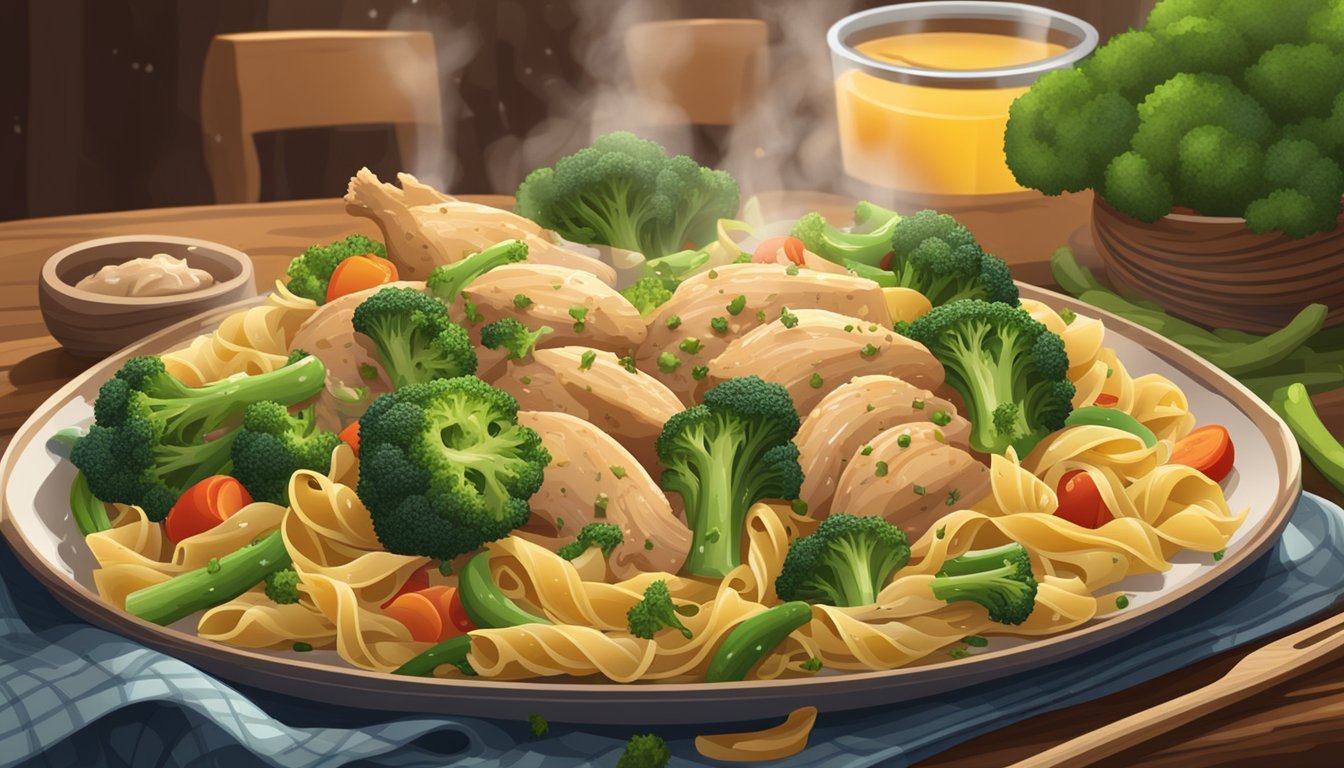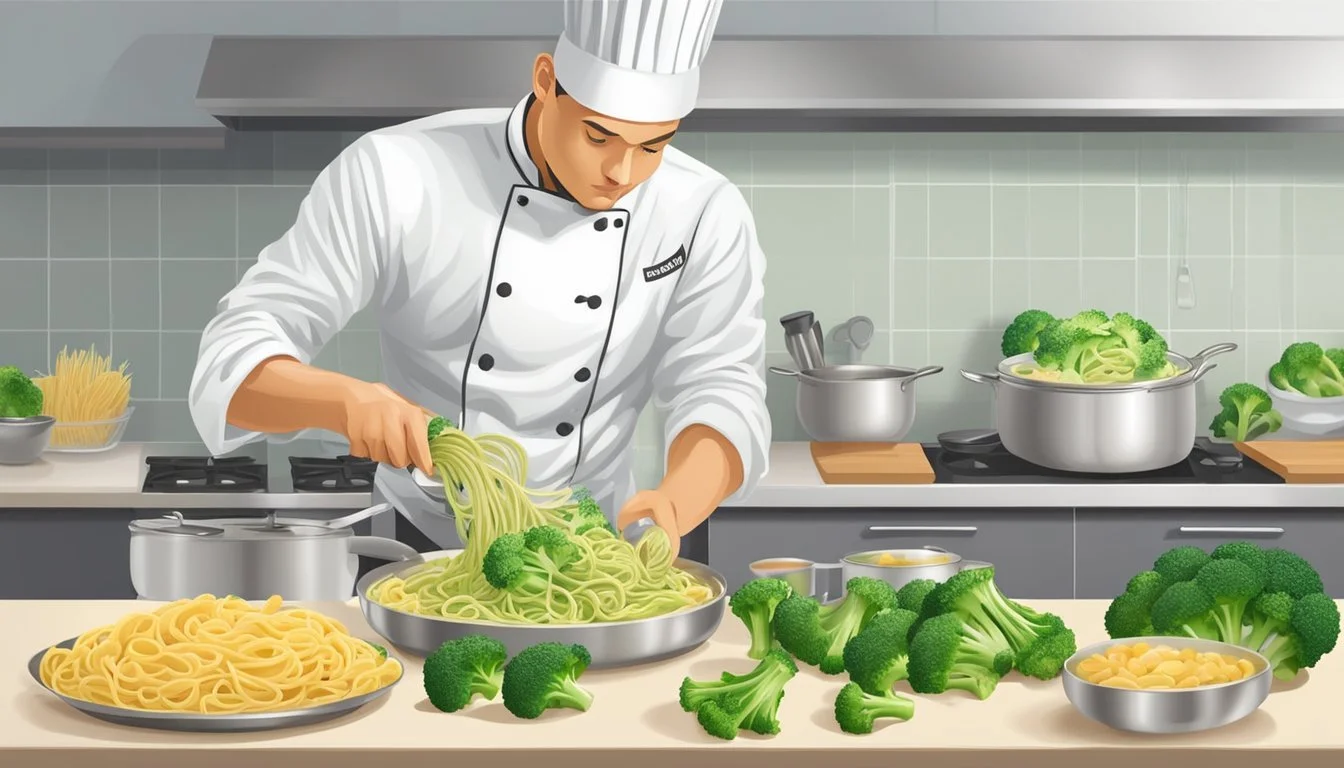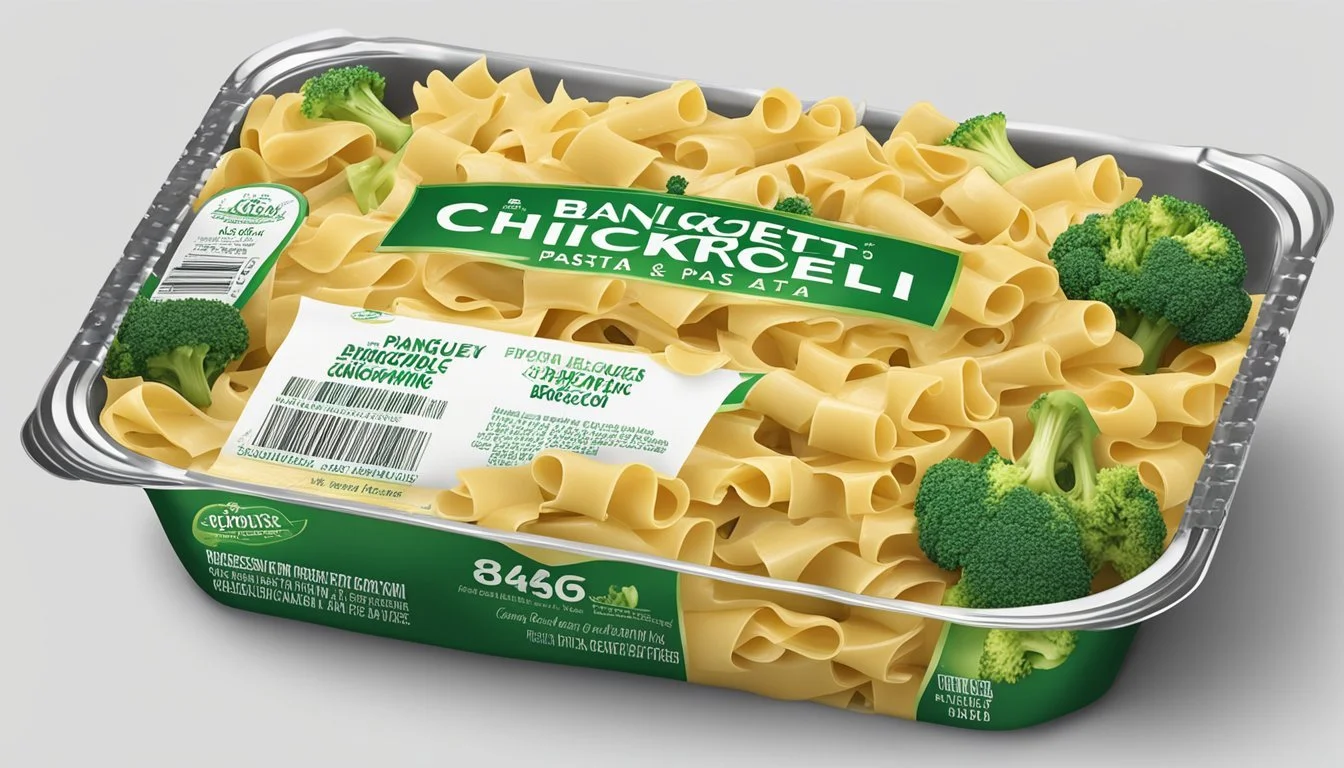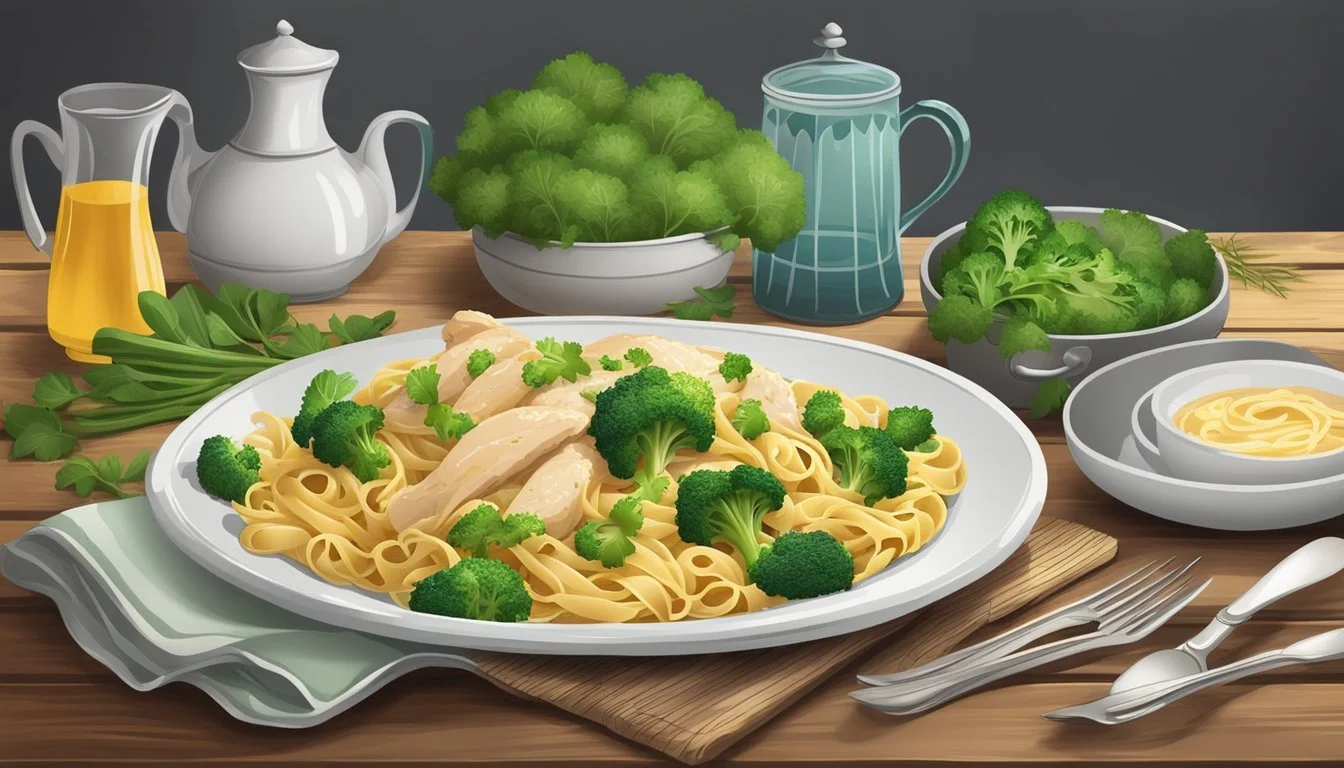How Long Does Banquet Chicken & Broccoli Pasta Last?
Storage Tips & Safety
Banquet chicken and broccoli pasta is a convenient meal option, balancing tasty ingredients with ease of preparation. This dish is quite popular for its comforting flavors, combining tender chicken and nutritious broccoli in a creamy sauce. Many people enjoy having it on hand for quick lunches or dinners when time is short.
Banquet chicken and broccoli pasta typically lasts 3-5 days in the refrigerator when stored properly in an airtight container. Ensuring the pasta is kept at a consistent, cold temperature helps maintain its quality and safety for consumption. For longer storage, consider freezing the dish, which can extend its shelf life to about 1-2 months without compromising too much on flavor or texture.
Understanding how long your meal lasts is essential for both food safety and meal planning. Knowing the shelf life of your Banquet chicken and broccoli pasta allows you to enjoy it at its best, minimizing waste and making the most of your grocery budget.
Understanding Food Storage
Proper food storage is crucial to maintaining the quality and safety of your meals. Various factors such as storage methods and environmental conditions can significantly impact the shelf life of dishes like banquet chicken and broccoli pasta.
Importance of Proper Storage
When it comes to preserving the freshness of chicken and broccoli pasta, using airtight containers is essential. Airtight containers help prevent exposure to air and moisture, which can lead to spoilage and bacterial growth. Refrigeration is another key element, as it slows down the growth of bacteria, extending the dish's shelf life.
Leftovers should be refrigerated within two hours after cooking to ensure safety. Always label and date these containers to keep track of their storage duration.
Factors Affecting Shelf Life
Several factors can influence how long your banquet chicken and broccoli pasta lasts. The type of container and whether it's sealed properly, as well as the fridge's temperature, plays a significant role. The ideal refrigeration temperature is below 40°F (4°C).
Additionally, the ingredients' freshness and the pasta's initial cooking conditions matter. Freshly cooked pasta, if stored properly, typically lasts about three to five days in the refrigerator.
Monitoring these factors and following best storage practices ensures your meal remains safe and delicious for as long as possible.
Banquet Chicken & Broccoli Pasta Composition
Banquet Chicken & Broccoli Pasta features a mix of key ingredients designed for both flavor and nutrition. It combines chicken, broccoli, pasta, and a creamy sauce, delivering a balanced meal.
Key Ingredients
Chicken and Broccoli Pasta involves several primary components. The chicken breasts provide a lean source of protein, vital for muscle repair and overall health. Broccoli brings in dietary fiber, vitamins, and minerals, enhancing the meal's nutritional value.
Penne pasta contributes carbohydrates that supply energy. The cream creates a rich texture, while parmesan cheese adds a savory, slightly nutty flavor. These ingredients work together harmoniously.
Nutritional Information
This dish offers a blend of macronutrients and micronutrients. A typical serving provides:
Calories: Approximately 300-400
Protein: Around 20-25 grams from chicken
Carbohydrates: About 40-50 grams from pasta
Fiber: 3-5 grams from broccoli
The fats in the dish, largely from the cream and cheese, range between 10-15 grams per serving. Additionally, the meal includes essential vitamins and minerals, such as Vitamin C from broccoli and calcium from parmesan cheese, contributing to a well-rounded diet.
Preparation and Cooking Techniques
Proper preparation and cooking are essential to ensuring that Banquet chicken and broccoli pasta comes out flavorful and perfectly textured. Focus on cooking the pasta to al dente and maintaining the right balance of seasoning to enhance the dish's taste.
Cooking to Al Dente
Cooking the pasta to al dente ensures it has the right firmness. To achieve this, bring a large pot of water to a rapid boil and add a generous tablespoon of kosher salt. The salt enhances the pasta's flavor. Next, add the pasta and cook it for the recommended time on the package. Typically, this ranges between 8-12 minutes.
Test the pasta a minute or two before the supposed finishing time. It should be firm but not hard. If using frozen Broccoli, add it to the boiling pasta four minutes before the pasta is done. Drain both when the pasta reaches al dente.
Seasoning Balance
Achieving a balanced seasoning is key to a delicious chicken and broccoli pasta. Start by cooking bite-sized chicken pieces in a skillet with olive oil or butter. Season with garlic powder, salt, pepper, and Italian seasoning. Cook the chicken for 2-3 minutes on each side or until fully cooked. Remove and set aside.
In the same skillet, melt some butter and add minced garlic, cooking briefly until fragrant. Sprinkle flour over and cook for 1-2 minutes, stirring constantly. Pour in chicken broth and milk or half-and-half gradually, stirring continuously until the sauce thickens. Season the sauce to taste, ensuring a harmonious blend of flavors. Combine with the drained pasta and broccoli, mixing well.
Preservation Methods
Proper storage of banquet chicken and broccoli pasta helps extend its shelf life and maintain its quality. Key methods include refrigeration for short-term storage and freezing for longer periods.
Refrigeration Best Practices
Refrigeration is ideal for keeping banquet chicken and broccoli pasta fresh for a few days. Once cooked, allow the pasta to cool to room temperature. This helps prevent condensation inside the storage container, which can lead to sogginess.
Transfer the pasta to an airtight container to maintain freshness and prevent moisture loss. Store it in the refrigerator at a consistent temperature of 40°F (4°C) or below. Properly refrigerated, the pasta can last for 3-5 days, ensuring it remains safe to eat and flavorful.
Label the container with the storage date to keep track of freshness. Avoid opening the container frequently to minimize exposure to air and bacteria.
Freezing for Longevity
For longer preservation, freezing is an excellent option. After allowing the pasta to cool, portion it into suitable servings and place it in freezer-safe, airtight containers or heavy-duty freezer bags. Removing as much air as possible from the packaging helps prevent freezer burn.
Consider adding a layer of plastic wrap inside the container for extra protection. Label and date each portion for future reference. Stored properly at 0°F (-18°C) or lower, banquet chicken and broccoli pasta can be frozen for up to 2-3 months.
When ready to eat, thaw the pasta in the refrigerator overnight before reheating. This helps maintain the texture and flavor of the dish. Reheat thoroughly to ensure it’s safe and enjoyable to eat.
Safety and Spoilage Recognition
Proper handling and storage of chicken and broccoli pasta leftovers are essential to maintain their safety and flavor. Key factors include recognizing signs of spoilage and understanding methods to prevent foodborne illnesses.
Identifying Spoiled Food
Spoilage can manifest through several indicators. Visual signs such as mold or discoloration are common. For instance, green or grey patches on the chicken or broccoli indicate fungal growth.
Odor changes are another clue. Chicken should smell neutral; a sour or rancid odor suggests bacterial proliferation.
Texture alterations, like sliminess or unusual softness in pasta or broccoli, are additional indicators. Trust one's senses and err on the side of caution. When in doubt, discarding suspect food is safer.
Foodborne Illness Prevention
Proper storage is critical to prevent illnesses. Refrigerate leftovers within two hours of cooking. Store the chicken and broccoli pasta in airtight containers to guard against contaminants.
Maintain the fridge temperature at or below 40°F (4°C) to slow bacterial growth. Consuming leftovers within 3-4 days for chicken-based dishes is advisable.
When reheating, bring the pasta to an internal temperature of 165°F (74°C). Stirring ensures even heating and eliminates bacteria effectively. Avoid reheating more than once to reduce the risk of contamination.
By adhering to these practices, the safety and quality of leftovers can be preserved, reducing health risks associated with spoiled food.
Serving Suggestions
Banquet Chicken & Broccoli Pasta can be elevated by adding complementary pairings and enhancing flavors with garnishes. These additions can transform a simple meal into a memorable dining experience.
Pairings and Side Dishes
Consider serving a fresh green salad with a light vinaigrette to balance the richness of the pasta.
A crisp Caesar salad with a lemony dressing can provide a refreshing contrast. Crusty bread, such as a baguette or ciabatta, allows guests to enjoy the creamy sauce to the fullest.
Roasted vegetables like zucchini or bell peppers can add color and nutrition. Opt for a side of steamed asparagus or green beans for a healthy, vibrant option. These choices ensure a well-rounded meal.
Garnishing for Enhanced Flavor
Top the Chicken & Broccoli Pasta with freshly grated Parmesan cheese for added depth and a salty touch. A drizzle of fresh lemon juice brightens the flavors and cuts through the creaminess.
Sprinkle chopped fresh basil over the dish to impart a hint of aromatic freshness. Red pepper flakes can be added for those who enjoy a bit of heat.
For a final touch, a small amount of olive oil can enhance the dish's overall richness. Consider adding toasted pine nuts or slivers of almond for a subtle crunch and nutty flavor.
Recipe Variations and Dietary Adjustments
Navigating dietary restrictions and preferences while making banquet chicken and broccoli pasta can be simplified with some thoughtful adjustments. This section explores alternative ingredients for dietary needs and creative twists for personal preferences.
Alternative Ingredients for Dietary Needs
Those with gluten sensitivities can use gluten-free pasta to make the dish accessible without compromising taste. Opting for whole grain or legume-based pastas adds nutritional value. Replace regular flour with gluten-free flour for thickening the sauce.
For dairy-free options, substitute half-and-half and Parmesan cheese with plant-based alternatives. Coconut milk or almond milk paired with nutritional yeast gives a creamy texture and cheesy flavor without dairy. Ensure all seasoning and broth are gluten-free.
Vegetarians can swap chicken with plant-based proteins like tofu or tempeh. Marinate them to enhance flavor and texture. Using vegetable broth instead of chicken broth maintains the dish's essence while meeting dietary requirements.
Creative Twists for Personal Preference
Change up the flavor by using skinless chicken thighs instead of chicken breasts for a juicier, richer taste. Incorporate different vegetables such as bell peppers, cherry tomatoes, or spinach to boost the dish's nutritional value and add color.
Spice it up by adding red pepper flakes or a dash of hot sauce. Including fresh herbs like basil or parsley at the end of cooking introduces a fresh, vibrant taste. For a citrusy note, add a splash of lemon juice or zest.
Experiment with different types of cheese such as Gruyère or mozzarella for a unique twist. You can also create a lighter version by decreasing the amount of cheese and using more broth. Such variations keep the recipe exciting while accommodating different palates and dietary preferences.

